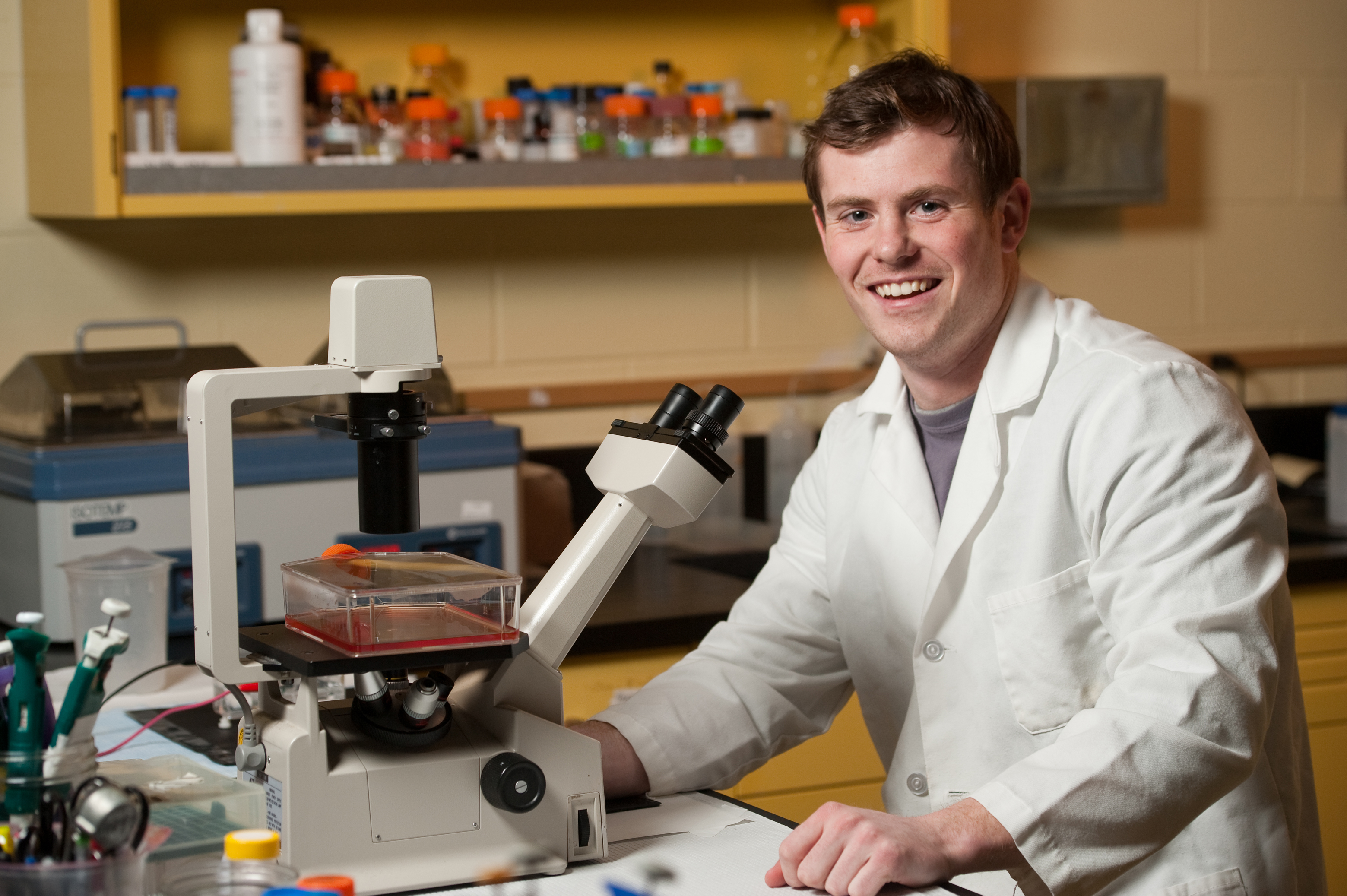March 17, 2011
From Plum Island to NBAF: Dual-degree program gives students research opportunities at high-profile laboratories

An East Coast trip has helped a Kansas State University student explore research connections between the university, the Plum Island Animal Disease Center and the National Bio and Agro-Defense Facility.
Nicholas Crossland is a second-year student in veterinary medicine and a graduate student in biomedical sciences from Overland Park. He recently spent two days touring Plum Island to look at performing a virology graduate project there as part of a dual-degree program with K-State's College of Veterinary Medicine. The trip was rewarding, Crossland said, and helped him understand how a high-profile federal laboratory works.
"The livelihood of many people depends on agriculture and raising animals," Crossland said. "With proper facilities, training and staff, I believe wholeheartedly that scientists can accomplish their mission with NBAF safely."
The National Bio and Agro-Defense Facility, or NBAF, in Manhattan will replace the aging Plum Island facility as a top federal laboratory for research to combat biological threats in animal and agricultural diseases. Crossland arranged the Plum Island trip with help from his adviser, Raymond "Bob" Rowland, virologist and K-State professor of diagnostic medicine and pathobiology who knows and works with scientists at Plum Island.
"Because NBAF is coming to Manhattan, there are opportunities for vet students to gain experience in foreign animal diseases," Rowland said.
The College of Veterinary Medicine's dual-degree program is one such graduate opportunity. The program allows students like Crossland to obtain both a doctorate of veterinary medicine and a secondary graduate degree. The program encourages veterinary students to obtain advanced degrees in foreign animal diseases, and it can provide another resource for veterinary students to perform research, Rowland said.
"It's not unusual for a vet student to obtain a master's or a doctoral degree while they are going to vet school," Rowland said. "What has made this a little more relevant at K-State is the fact that now we have NBAF coming to Manhattan."
NBAF's arrival provides Crossland and other students with research connections to other animal disease laboratories like Plum Island. During his visit Crossland met with scientists in different branches of the U.S. Department of Homeland Security and the U.S. Department of Agriculture, including the Agricultural Research Service and the Animal and Plant Health Inspection Service. Following proper safety procedures, he observed daily operations and was able to enter containment, the area where labs are located.
Crossland also gained valuable insight into the research being performed at Plum Island, some of which will be performed at NBAF when it is completed in 2018. He spoke with virologists, pathologists and scientists researching different agents like classical swine fever, African swine fever and foot-and-mouth disease.
"One of the big projects the researchers are working on is putting host genes, such as interferon genes, into vaccines to help stimulate the host response to the vaccination," Crossland said. "The researchers all have very broad specialties, but they're all very collaborative and work together."
Crossland's own research has focused on developing diagnostics, and he was especially interested in the diagnostic projects and technologies being used by some of the Animal Plant and Health Inspection Service researchers. The service has the national stockpile for the foot-and-mouth disease vaccine, and many of the scientists are also involved in educating veterinarians and public health officials on what to look for and how to react during a foreign disease outbreak.
Crossland is working with Rowland on research involving porcine circovirus type 2, a widespread virus associated with many clinical symptoms, which costs producers a lot of money each year. They work in one of the biosafety level-2 laboratories at K-State to develop better diagnostics to assess successful response to vaccination against the disease.
The research is important because it will help scientists understand how diseases emerge and how they spread, Rowland said, and future outbreaks can be prevented by obtaining fundamental biological information on the virology of the disease.
While Crossland is interested in performing research at Plum Island, he's also exploring postgraduation options, including the U.S. Army Veterinary Corps. For now, he plans to focus on finishing both his master's degree in biomedical science and his doctorate of veterinary medicine.
"I have a great respect for diagnostics because they play a huge role in our profession," Crossland said. "It's not always obvious what is causing a particular animal's condition. Experience and expertise play a vital role in leading us in the right direction, while diagnostics surface a conclusion. Working on my master's degree has presented me with valuable tools for the development and application of current diagnostic technologies. I think it's going to make me a better veterinarian at the end of the day."
